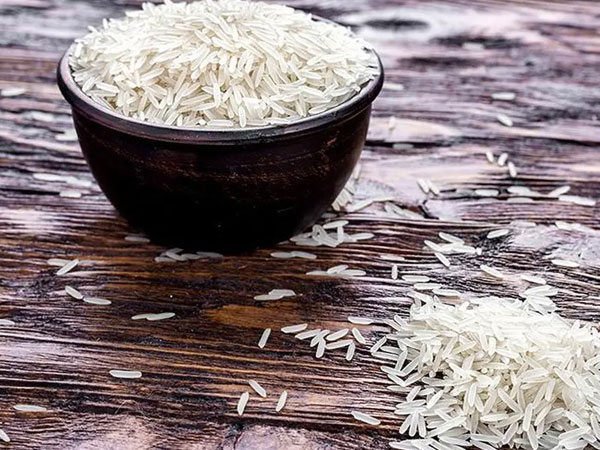Baguio City—Planters in the Cordillera Administrative Region (CAR) are pinning their hopes on drones to produce more paddy rice after they recorded improvements in their harvest using the unmanned aerial vehicles (UAVs).
Farmers in the major rice-producing provinces of Kalinga and Apayao started availing of drone services during the dry planting season in December 2024 under the Drone for Rice Project of the Department of Agriculture (DA)-National Rice Program.
Initially introduced to the farmers from the two provinces tilling a total 160 hectares, farmers noted that the use of drones led to precision in direct seeding or seed application compared to transplanting seedlings manually.
Edwin Joseph Franco, coordinator of the DA Cordillera Regional Rice program, said this has led to a “remarkable increase” in yield.
Of the 160 hectares covered by the program, the best cluster setup is composed of 27.9 hectares cultivated by 11 farmers who were able to more than double their harvest to more than 9 metric tons (MT) using drones in direct seeding, from an average of 3.9 MT to 4.5 MT.
The use of UAVs, according to farmers, also enabled farmers to significantly reduce their production cost to a range of P2,000 to P2,500 per hectare, from the P10,000 to P12,000 per hectare using traditional means.
“Mechanization through drone in palay production is indeed a big help in increasing yield through precise planting of seeds, reducing cost of production, getting higher income, and making life easier for the farmers who no longer have to spend half a day planting seeds or applying fertilizers or pesticides on one hectare of rice farm,” Franco said.
While there was no observed difference between the use of drones and manual labor for fertilizer and pesticide application, Franco said the UAVs ensured uniformity and precision, which has a positive impact on palay growth and yield.
Initially, many of the farmers approached by the DA were incredulous about the drones and were hesitant to use it. However, the results encouraged other skeptics to give the drones a try.
From the initial 160 hectares, Franco reported a total of 850 hectares of palay farms are now covered by the drone program, with the addition of farmers from Abra province now willing to avail of the government’s assistance.
He said the government is hoping that farmers will be able to produce the same volume of paddy rice during the wet season.
“It may not be as high as 9.8 tons per hectare, but maybe it would be better than the usual practice and farmers could continue increasing their yield and at the same time reduce the cost of production.”
DA has allotted P15.4 million for Cordillera rice farmers willing to avail of services under the drone assistance program. Drone services—direct seeding and fertilizer and pesticide application—may be availed of by farmers individually, but they have to cluster as a group with a minimum of 25 hectares of rice farms, as it is costly to use drones in small areas.
Each farmer is entitled to receive P8,000 worth of services per hectare, aside from P11,900 worth of palay seeds and fertilizers that DA also provides for free.
“There is no way we can lower the cost of production if we remain farming in the traditional way. We need to introduce innovations,” Franco said.
When the department introduced the use of drones to the Kalinga and Apayao rice farmers, they showcased all aspects of the intervention so they can see its benefits to rice production.
“We needed to convince a wide mass base of farmers that would appreciate the technology. Using the outcome based on our best cluster, we were able to show the actual harvest and how big the improvement is, which is higher than the usual yield.
Masaya ang mga farmers dahil nakita nila ’yung potential ng technology. Nakakalungkot lang na tumapat ‘yung season na mababa ang buying price ng palay, but still, dumoble ang ani kaya may income pa rin sila [The farmers were happy because they saw the technology’s potential. It was just unfortunate that during that time the buying price of palay was low, but still their production doubled and they still had profit],” the DA official said.
Based on the Philippine Statistics Authority’s palay production survey in 2022, Kalinga is the top contributor to the Cordillera region’s paddy rice output at 34 percent or 114,805 MT, followed by Abra with 23 percent (76,921 MT), and Apayao with 22 percent share (74,380 MT).
Available DA data showed there are 22,553 registered rice farmers in Kalinga and 18,131 registered rice farmers in Apayao.
Gabriel Balian, president of the Pangol Rang-ay Farmers Organization Rizal, Kalinga, is one of those who was convinced to use the drone technology. As a program beneficiary, he said he is thankful because the state’s assistance not only improved their farming practices but also boosted their income.
Franco added technological innovations such as the use of drones will entice the youth to take up rice planting because the technology has proven its ability to make farming less onerous.
“With all of this, it is a hope for the rice industry. If we can reduce the cost and at the same time increase production because of the precision the drone technology provides, even if the palay buying price is low at the moment and farmers still do not get the right full value of their sacrifices, at least they can enjoy lower production cost and less manual labor by harnessing the technology for them to continue planting rice,” he said.













© Copyright 2025 The SSResource Media.
All rights reserved.